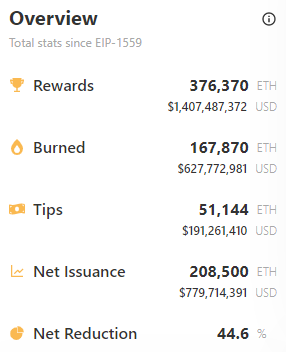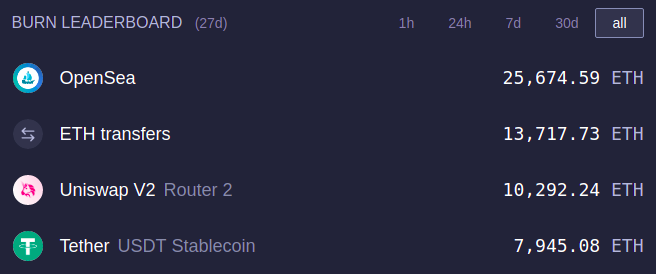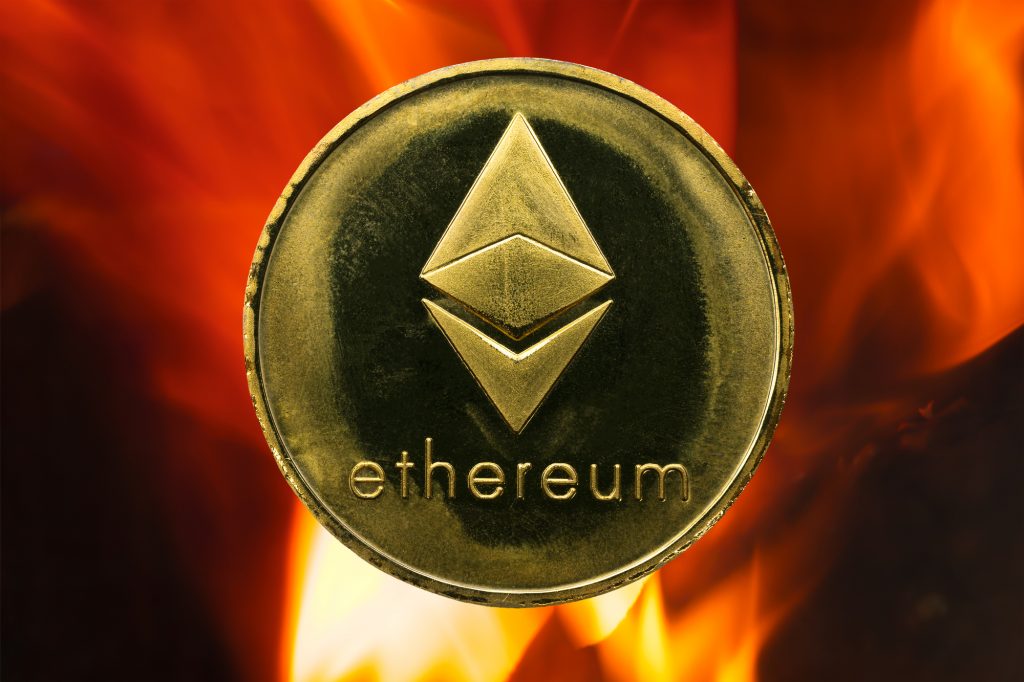With the EIP-1559 upgrade, miners no longer receive the full transaction fees from users – as a portion is burned. Since implementation, over $600 million worth of Ether (ETH) has been destroyed in this way. Investors are hoping this will lead to a deflationary future for Ethereum.
The recent upgrade to the Ethereum blockchain included a number of features added to the network's rulebook. The most long-awaited change was the EIP-1559 upgrade. Its implementation ensures that the network follows a different transaction pricing mechanism that introduces a base fee for each block found on the network. Essentially, the rest of the fees are burned, and data suggests that over time this will significantly reduce the overall supply of Ether in circulation.
Ethereum blockchain change
The EIP-1559 addresses one of Ethereum's core problems in contrast to Bitcoin - inflation. High usage of the network used to pay out more Ether to miners, who mostly covered their operating costs by selling the tokens. Now it is estimated that about 6,000 ETH tokens are burned every day, which would already have a deflationary effect.
This upgrade is another step towards ETH 2.0, changing the structure of Ethereum from proof-of-work (mining) to proof-of-stake (ownership). Right now, we are in a transition phase. Due to heavy usage, a lot of Ether is being burned, which is shrinking the supply. Currently, people are still mining, which mostly outweighs the burning.
However, with the EIP-1559 upgrade, miners are also enjoying priority fees for NFT transactions. With increased activity on the chain due to high NFT transfers and DeFi apps, investors are willing to pay more priority fees. This has led to an increase in miners' overall income. With the next upgrade, scheduled for December 2021, miners will be replaced by so-called stakers.
Deflationary nature of the EIP-1559 upgrade
Before the upgrade, the Ethereum network assumed a burn rate of about 10,000 ETH per year. However, after just under a month, over 160,000 ETH have already been burned. This is equivalent to just under $600 million and, depending on the valuation, also affects the market capitalization. On average, cryptocurrency inflation has been reduced by around 44% so far - a significant figure.

The ongoing hype around non-fungible tokens (NFTs) is currently causing a lot of traffic on Ethereum. This increases fees (gas), which, to a large extent, are burned. This is draining the market of over 200 ETH per hour since launch. During special events, it is often many times that amount.
Lively use of the network
The NFT marketplace OpenSea is the clear leader in burning Ether. While ETH transfers typically consume little gas, mining an NFT incurs higher fees. The near-daily launches of NFT projects heavily load the network. Ethereum's daily fees have increased tenfold since July and stand at nearly $60 million per day.

For the average user, the update should result in a simpler fee structure, faster transactions and, due to the burn rate, price increases. So far, the price of Ether has responded positively to the implementation, but whether this holds true in the longer term remains to be seen.




